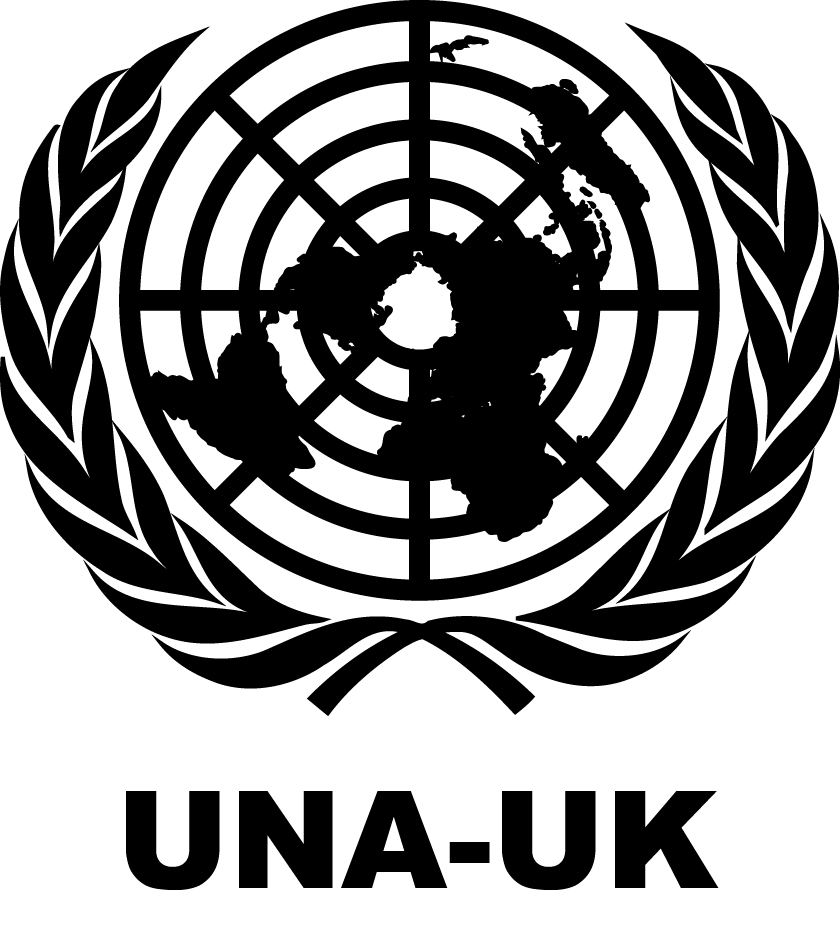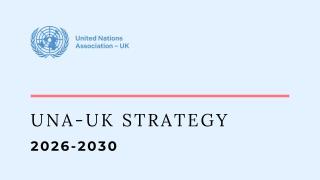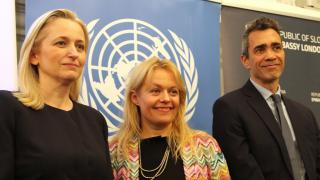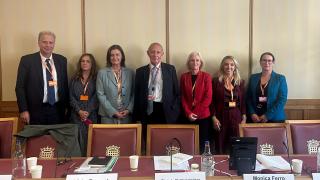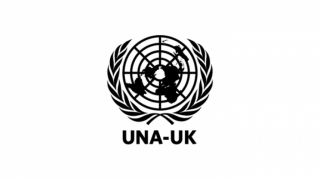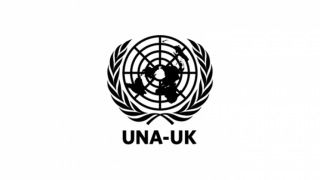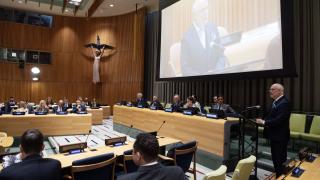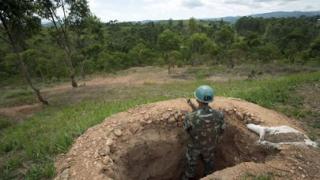
This comment piece by James Kearney, UNA-UK Peace & Security Programme Coordinator, was written to mark ten years of UN Security Council Resolution 1325 on women, peace and security. It is the first in a series of comment pieces currently being produced and commissioned for the online edition of UNA-UK's flagship magazine, New World, which will be launched in spring 2011.
The Democratic Republic of the Congo (DRC) covers a vast area – over half the size of the European Union – and has a population of 70 million, but if international attention is a yardstick, it might as well be the size of the Isle of Man. Since the country’s brutal civil war came to an end in 2003, only the worst excesses of ongoing violence, such as the appalling episode of rapes this summer, drag it back into the spotlight.
Although the five-year civil war in the DRC ended in 2003 with the formation of a transitional government, crimes against humanity and war crimes – including murder, rape and sexual slavery, recruitment and use of child soldiers, and forced displacement – continue unabated. The north-east of the country, encompassing the provinces of North and South Kivu, and Ituri, probably endures the worst of the violence, presenting an enormous challenge for the meagre UN peacekeeping forces stationed there. Small wonder that New York Times columnist Nicholas D. Kristoe commented in January 2010, “Sometimes I wish eastern Congo could suffer an earthquake or a tsunami, so that it might finally get the attention it needs”.
The history of post-colonial DRC follows a pattern of fracture, solidification and re-fracture, as adjacent nations have vied for influence, security and resources. This pattern is particularly pronounced in the Kivus and Ituri, which share a border with Uganda, Rwanda and Burundi, where atrocities by militia groups against civilians have been recorded with depressing frequency. A report released by the Office of the UN High Commissioner for Human Rights on 1 October 2010 documents the most serious incidents that took place between 1993 and 2003.
The report heavily implicates Rwandan, Burundian and Ugandan forces in fuelling the conflict, noting that incidents in 1996-7 in particular were such that “a court could infer the intention to destroy the Hutu ethnic group in the DRC in part.” It argues that “the extensive use of edged weapons…and the apparently systematic nature of the massacres of survivors after the [refugee] camps had been taken suggest that the numerous deaths cannot be attributed to the hazards of war or seen as equating to collateral damage.” The Rwandan, Burundian and Ugandan governments have vehemently rejected the report, while the Congolese government has called it “credible and heartbreaking”.
The current Rwandan administration has consistently denied targeting civilians in its post-genocide campaign and the years following on from it, maintaining that the FDLR (Forces démocratiques de libération du Rwanda) merely pursued militia groups responsible for the genocide in Rwanda. Yet the report states that many Hutu civilians were brutally killed after refugees had allegedly been screened by the Rwandan army and its Congolese allies:
The vast majority of incidents listed in this report could, if investigated and proven in a judicial process, point to the commission of prohibited acts such as murder, willfully causing great suffering, or serious injury to body or health, rape, intentional attacks on the civilian population, pillage, and unlawful and arbitrary destruction of civilian goods, including some which were essential to the survival of the civilian population. The vast majority of these acts were committed against protected persons, as defined in the Geneva Conventions…
The report has rightly placed the spotlight on past atrocities but it is vital that the ongoing plight of civilian populations in north-eastern DRC does not get lost in the debate over its allegations. Kenneth Roth, Executive Director of Human Rights Watch, has said “questions of qualification and terminology are important, but should not overshadow the need to act on the content of the report regardless of how the crimes are characterised.” I would go one step further: the report should not overshadow the need to act in a manner that supports the protection of civilians currently under threat. With the withdrawal of UN peacekeepers scheduled for 2011, their situation is expected to become even more uncertain.
In a sense it easier to deal with the past, no matter how atrocious, than make commitments to the living – that is something that takes political will, practical planning and the effective funneling of resources. It would also require the international community to untangle the messy links between the DRC’s resources, the militias and other parties that control them, and governments and companies across the world that use them. In a letter to the UN Secretary-General dated 15 October 2003, the Chairman of the Panel of Experts on the Illegal Exploitation of Natural Resources and Other Forms of Wealth of the Democratic Republic of the Congo, stated:
Illegal exploitation remains one of the main sources of funding for groups involved in perpetuating conflict, especially in the eastern and north-eastern regions of the Democratic Republic of the Congo… A specific example is that of the export of the mineral columbo tantalite (coltan), from which the metal tantalum is extracted. Tantalum is used, inter alia, in the production of electronic components. In 1999 and 2000 a sharp increase in the world prices of tantalum occurred, leading to a large increase in coltan production in eastern Democratic of Congo. Part of the new production involved rebel groups and unscrupulous business people forcing farmers and their families to leave the agricultural land, or chasing people off their land where coltan was found and forcing them to work in artisanal mines. As a result, the widespread destruction of agriculture and devastating social effects occurred, which in a number of instances were akin to slavery. While the processors of coltan and other Congolese minerals in Asia, Europe and North America may not have been aware of what was happening…the Panel’s investigations uncovered such serious concerns that it was decided to raise the awareness of the international business to those issues…
The roots of the ongoing violence in eastern DRC defy simple explanation. The only certainty revolves around the victims – for the most part civilians, living in fear, who seem to be spared no misery. Reports of sexual assault by the very UN peacekeepers mandated to protect them have raised questions about the role of the force, MONUSCO, itself. Yet the eastern DRC requires peacekeepers, and further deployments in the region. To dismantle the entire peacekeeping mission would be dangerous and risk further instability in a region that is a long way from Kinshasa, politically and practically. MONUSCO’s current mandate is due to expire on 30 June 2011, after which domestic forces will assume full responsibility – their capacity to police the area and retain impartiality is uncertain.
The decision ultimately lies with the ruling administration in Kinshasa, but if there ever was a time for the international community to exert pressure and refocus attention and resources towards the region, it surely is now. MONUSCO had 19,544 uniformed personnel on the ground in the DRC as of 30 August 2010, and its approved budget for the 12 months ending 30 June 2011 was set at US$1.369 billion. In comparison, the total number of uniformed, foreign troops in Afghanistan stood at over 146,000 in August 2010 and the United States was forecast to spend US$105 billion on military operations there in 2010. It is little wonder that the peacekeeping forces in eastern DRC struggle to fulfil their mandate on such a shoestring budget, and sexual crimes of an unspeakable nature continue unchecked. As Margot Wallstrom – the Special Representative of the UN Secretary-General on Sexual Violence in Conflict –recently stated: the DRC’s legal frameworks for protecting women are robust. They include a 2006 law against sexual violence, a national strategy to combat sexual violence and a policy of zero tolerance for rapes, murder, theft and other criminal acts by the national army. But resources for enforcement fall far short.
Five million, four-hundred thousand people have died as a result of conflict in the DRC since 1998 and during the last ten years there have been an estimated 200,000 cases of rape in the eastern part of the country. As Wallstrom told the UN Security Council in May 2010, “women are still not safe, under their own roofs, in their own beds, when night falls,” saying she was haunted by what she heard on her trip to the DRC. She mentioned a woman, nine months pregnant, who witnessed her husband's murder and was then beaten and raped by five or six men. Her infant was stillborn.
I am uncertain as to what further suffering the country should endure before more than a cursory glance is cast by the international community in its direction.
